How businesses today face a key challenge to this critical need
If you’re reading this article, you’re well aware that digitalization has transformed enterprise companies and the landscape of business itself – driving innovations like mobile- or chat-based applications as well as large-scale revolutions in product offerings, go-to-market channels and operations. Nearly nine out of 10 business leaders say digitalization is a top business priority; the average organization has undergone five enterprise changes in the past three years, and 70% of key talent say their job duties change every three years.
Today, much of the focus of digital transformation has shifted from the technology to the nature of the customer’s experience when using that technology – which, in a digital enterprise, equates to the customers’ experience of the brand itself. Customer-centric, design-focused strategies have proven to be the drivers of competitive advantage. As noted in an oft-quoted statistic from DMI, an expert in end-to-end mobility, companies that have invested in innovative design (such as Apple, Coca-Cola, Ford, Nike, and Walt Disney) outperformed the S&P 500 by 228% over a ten-year period.
As digitalization continues to disrupt business, all sectors of the economy feel pressure to hire talent with digital skills, not just those once viewed as sitting on the leading edge of technology. That also means more and more companies need new skills – in particular, user experience skills – that are not historically part of their core competencies.
UX Expertise: In High Demand…
Adobe set out to uncover the latest hiring trends in UX design and the results point to one big conclusion: ‘UX designers’ are now as in demand as software engineers, and that demand is only going to increase. Adobe spoke to 500 managers and department heads working in UX design and asked them about their needs, their hiring priorities, and what they’re looking for in potential candidates. What we found looks very good for UX professionals.
One HR manager called UX design “very critical for our [organization’s] future,” while another department manager said, “UX review, prototyping, and screen design are important to ensure the end product will not be met with resistance by the end-users or even product failure.” But the need for UX design doesn’t stop there: 73% of managers said they plan to double the number of UX designers in their organization in the next five years. In fact, many don’t plan to wait that long: 63% of them hired five or more UX designers in the last 12 months and 40% of them expect to double their total number of UX designers in the coming year.
“Utilizing top design talent…helps companies grow faster through differentiation and better customer experiences,” according to DMI. “Margins can also be driven higher through generating an ‘I gotta have it’ (at any cost) mentality on the part of customers.”
No wonder designers of all stripes are in such high demand.
The need for UX talent isn’t limited to Silicon Valley. Demand for UX professionals has risen massively in many territories including Europe, the US and Australia. The number one in-demand role for 2018 is a UX designer, according to the Onward Search Digital, Creative, and Marketing Professionals Salary Guide. UI designer comes in at number four and user researcher appears at number eleven in the list.
Dara Boland, who is Principal Consultant, UX, at Morgan McKinley, said the growth in demand has been noticeable during the past five years but there has been a particularly sharp rise in demand for UX designers in the past 12-18 months. “Business is backing design and is investing more and more in UX,” he said. “Companies of all shapes and sizes, across all industries are seeking out the digital opportunities afforded to them by UX. Resulting from this, we have witnessed a surge in jobs in the space and a talent war is well underway, as companies try and secure limited personnel.
“The demand has both come from companies looking to set up larger-scale design teams (in some cases, 20 to 30 people) and from companies with no previous design culture beginning to appreciate the need for at least 1-2 talented UX designers on site.”
John Dennehy, Founder and Executive Chairman of Zartis, an IT recruitment company, agrees that demand for UX professionals has increased significantly in recent years and uses Ireland as a good example of this. “A lot of multinationals that started in Ireland with sales and support teams have realized there’s a very strong local pool of creative and technical experts,” he said. “As a result, more software projects are being owned and built out of Ireland. UX is obviously an essential part of this process.
“The indigenous software sector is also thriving, creating even more demand. Finally, more corporations are building out ‘digital transformation’ projects and one of the first needs that arise out of this are UX skills. It’s a good time to be in UX.”
…And Hard to Hire
“UX talent” meant nothing ten years ago. Now, the role represents a subsect of multiple roles; designer, customer experience expert, developer. The job requires very specialized skills – and now that businesses have realized the value of these professionals, UX talent is snatched up quickly.
Amid this talent crunch for digital skills and capabilities, companies must hire talent with which they had little experience prior to the rise of digital business. Automakers, for instance, traditionally built their talent strategies around core competencies in manufacturing and engineering, but as they race startups and tech giants to deploy autonomous vehicles, they need experts in sophisticated software and emerging technologies like artificial intelligence (AI). This leaves companies under enormous pressure to fill unfamiliar roles.
“UX is one of the most difficult roles for companies to fill,” says Dennehy. “There is a shortage of experienced professionals, so demand is currently outstripping supply. Many internal and agency recruiters struggle to fill UX roles because there’s a knowledge gap in terms of what UXers do, how do you assess them, and how do you even find them. As a result, many UX roles remain unfilled.”
“Unfortunately for most organizations, the most critical talent needs are also the most rare and expensive to hire for,” said Matt Shinkman, managing vice president and risk practice leader at Gartner. “Adding to this challenge is the fact that ongoing disruption will keep business strategies highly dynamic, adding complexity to ongoing talent needs. Most organizations would benefit from investing in their current workforce’s skill velocity and employability, while actively developing risk mitigation plans for their most critical areas.”
Talent Shortage is Now a Company’s #1 Risk
Business leaders with experience managing complicated innovation projects or product launches understand that immediate access to the right people, skills, and expertise defines the speed at which they execute. As McKinsey’s Marc de Jong, Nathan Marston, and Erik Roth write in their article The Eight Essentials of Innovation, “successful innovators achieve significant multiples for every dollar invested in innovation by accessing the skills and talents of others. In this way, they speed up innovation and uncover new ways to create value for their customers and ecosystem partners.”
The need to shorten product cycles and time to market has made seamless access to key skills critical to remaining competitive. In addition, rapid shifts in tools and technology, coupled with a tight labor market, have made key innovation-focused skills harder to find and engage than ever before.
What grinds even the best-designed innovation teams to a halt faster than any other factor? Lacking the right people, skills, and expertise required to do the work in the first place. As companies gear up to rapidly innovate, business leaders are realizing that mission-critical work is cross-functional, drawing upon resources with increasingly specialized expertise. This kind of work often relies heavily on skills that fall outside of the domains and areas of expertise that a company has developed over the years.
The accelerating pace of digital disruption and the resulting workforce challenges have escalated to the point that staff shortages have become the top emerging risk organizations face globally, according to Gartner, Inc.’s latest Emerging Risks Survey.
The survey of 137 senior executives in Q418 showed that concerns about “talent shortages” now outweigh those around “accelerating privacy regulation” and “cloud computing”, which were the top two risks in the 3Q18 Emerging Risk Monitor.
“Organizations face huge challenges from the pace of business change, accelerating privacy regulations and the digitalization of their industries,” said Shinkman, “A common denominator here is that addressing these top business challenges involves hiring new talent that is in incredibly short supply,”
The need to bring multiple skill sets under one roof to drive rapid execution and faster time to market has led to the proliferation of cross-functional teams built, in theory, to lower the barriers between functions and areas of expertise that often hamstring innovation efforts. However cross-functional teams only work effectively when stocked with the right skills and expertise. “Cross-functional teams have become ubiquitous because companies need to speed innovations to market. The teams are like arteries, connecting parts of the body, enabling the whole organism to renew itself,” writes management scholar and researcher Behnam Tabrizi in Harvard Business Review. “That’s why it’s so important for leaders to pay attention to the way cross-functional teams are set up and how well they work: when they don’t function, the organization’s arteries harden.”
New Ways to Set Innovation in Motion
In the weeks and months to come, we’ll take a closer look at the ways Filter works with leading enterprise companies to address these challenges. By jettisoning traditional agency and staffing models, our custom-built solutions deliver highly-specialized expertise – embedded workgroups, on-site agencies, bespoke outsource teams – in ways that provide greater control, transparency, agility and speed to market for our clients. And while Filter’s recent acquisition by Merkle won’t change our unique approach, it does enable us to bring an even wider range of solutions, services and expertise to each new challenge.
Read our blog, “UX Expertise @Filter: It Starts at the Sourcing”, to learn how our sourcing team identifies and vets top UX professionals for our clients.
Filter is helping product owners, teams and companies optimize UX practices with our team of skilled Filterati. Discover how we can drive greater success for your business: click here to contact Filter and let us know more about your UX needs.






